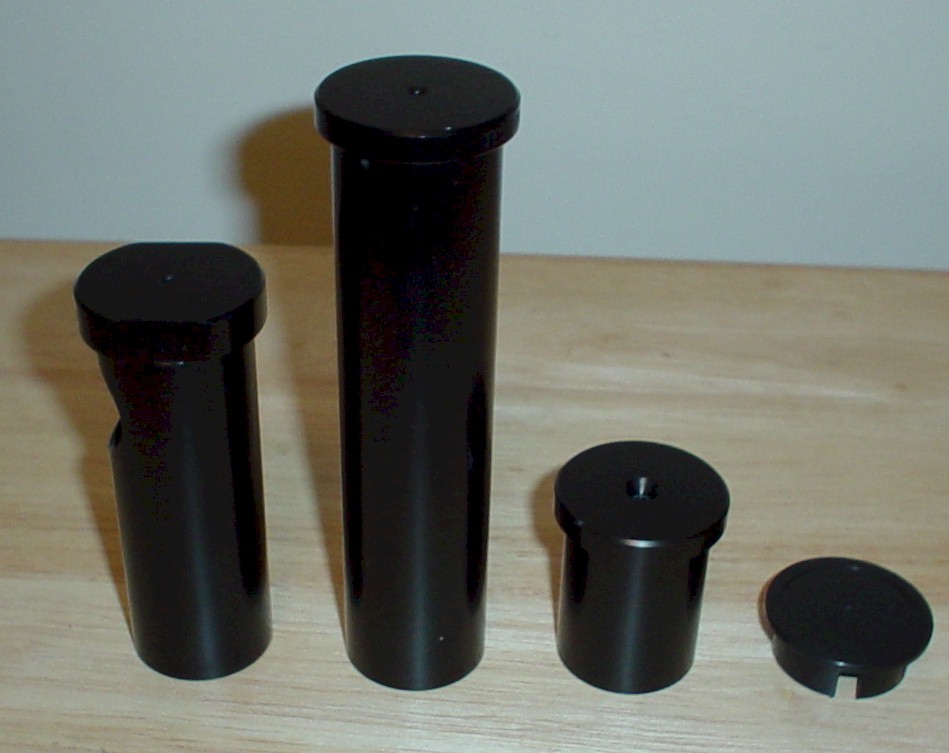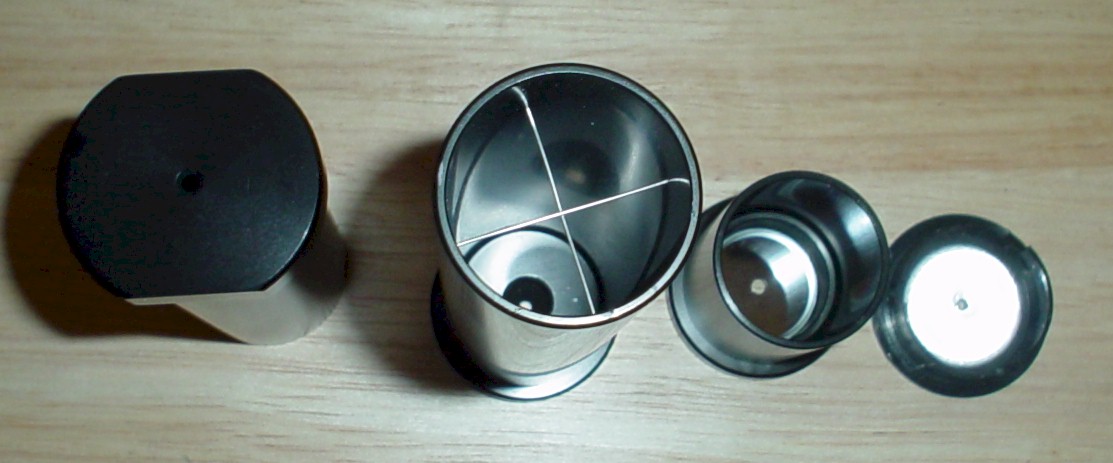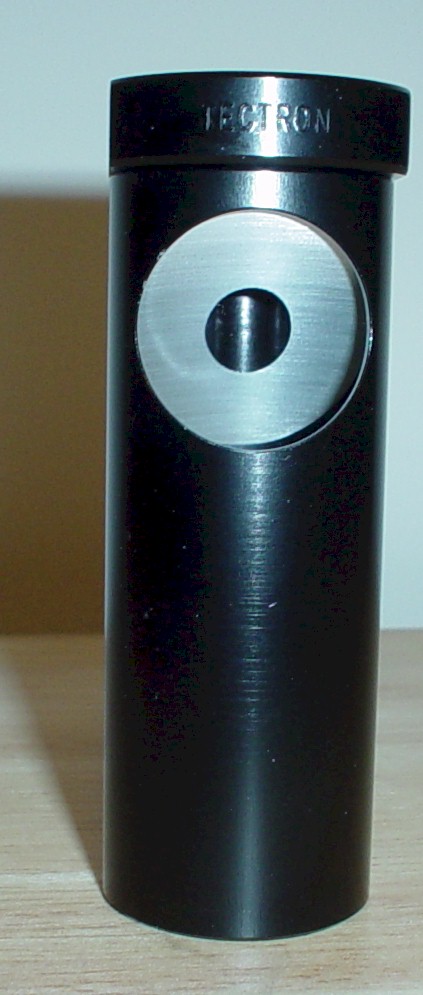Collimating
my
Dobsonian Reflector
Telescope
Introduction
This article relates my experiences in collimating my Dobsonian-mounted Newtonian reflector telescope (commonly referred to as a "Dob"). First, let me stress a few points:
- I am a beginning, novice amateur astronomer. I purchased this telescope in January 2003 -- it's the first scope I have ever owned.
- I am not:
- Optical engineer
- Professional astronomer
- Physics professor
- Or any other type of expert in telescopes and optics.
I am just an old retired Army colonel trying to keep himself busy until I move into a nursing home.
Now, having said that, here are some tricks I developed in the process of collimating my Orion XT-8 Dobsonian telescope. What, you ask, is collimation? It's the process of getting all the optics in the scope lined up properly. If collimation is not correct, the scope's seeing ability is degraded -- more out of collimation, more degraded.
Links
Here are several links that do a much better job than I ever could of explaining the theory and practice of collimating Newtonian reflector telescopes. I recommend you go to each of these, print them, and read them before starting to collimate your scope.
- Sky & Telescope magazine has what may be the best article about collimating a Newtonian reflector.
- Collimating Newtonian Optics, by Mel Bartels
- Step-by-Step Guide to collimation
Mel Bartels' site is my favorite. He has several useful sketches. I captured his sketches as jpg files and printed them on my color printer; they were quite helpful in collimating my scope.
Owner's manual
Your scope should come with an owner's manual that has collimation instructions. Read it and read it again. The manufacturers really do know what they are talking about.
How often to collimate
I wish I could answer this question with some degree of scientific certainty -- but -- this is what I have learned from owning my scope for two months.
- If it's a new scope, collimate it.
- If it's a scope of unknown origin and you don't know when it was last collimated, collimate it.
- Once you have collimated it, keep your hands off it.
- If all you do is move from the garage (or wherever you keep it) to the backyard, keep your hands off it.
- If you toss it in the back of the car/truck and bounce it out to a dark-sky site, take along the Cheshire eyepiece and check the collimation when you set up; ditto for when you return home.
Collimating tools
My scope came with a single collimating eyepiece. I splurged and purchased a set of collimating tools manufactured by Tectron and sold by High Point Scientific. I recommend these items -- buy the set and they come with a booklet on collimation. Here is a photo of the three collimating tools that make up the set, along with the collimating eyepiece that came with my scope.

This is a set of Tectron collimating tools/eyepieces and the collimating eyepiece that came with my scope. These are, from left to right:
- Cheshire sight. I use this only in the dark.
- Sight tube -- you will use this first (the tallest item).
- Collimating eyepiece, also called an "automatic collimator." Use this second. It is NOT automatic -- you do the collimation, it helps.
- Collimating eyepiece that came with the scope (shortest item).
You could collimate the scope with the small collimating eyepiece that came with it -- the other items make collimation much easier.

This is a view of the collimating tools/eyepieces with three of them turned upside-down. Note inside each of these the inside end surface is mirrored -- this causes the eyepiece to reflect light back into the scope tube so you can see what you are doing. Note that the sight tube is (1) longer than the others and (2) has a crosshair.

This is a front view of the Cheshire. It has an mirrored surface set at a 45-degree angle and a hole in the mirror and in the top so you can look into the scope through the mirror. More on this later -- much later.
Because I have put a lot of Images into this article, I am breaking the article into pieces so it will load faster.
| Back to Amateur Astronomy page | |
| Collimation -- Page 2 | Collimation -- Page 3 |